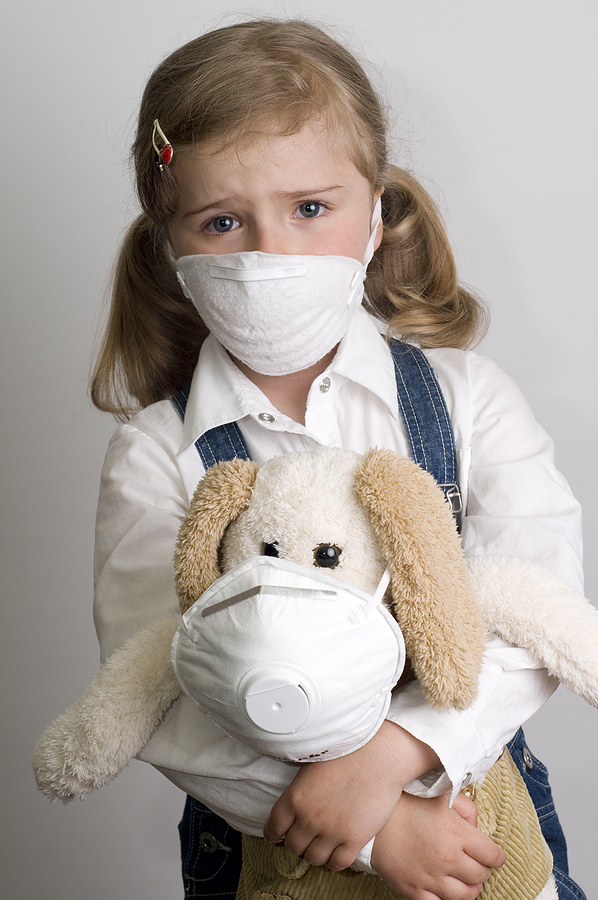Are They Protecting Us?
 Friday, August 26, 2011 at 05:11PM
Friday, August 26, 2011 at 05:11PM  Suppose you move into a new neighborhood and there are two parks with running trails and exercise areas. One of the parks is closer to your home than the other. You want to make sure, before you head out alone into unfamiliar surroundings, that the park is safe, so you ask a local police officer.
Suppose you move into a new neighborhood and there are two parks with running trails and exercise areas. One of the parks is closer to your home than the other. You want to make sure, before you head out alone into unfamiliar surroundings, that the park is safe, so you ask a local police officer.
“Officer, is this park safe for me to jog in during the early morning hours?”
“There isn’t enough information available to draw a conclusion.”
“So you’re saying its safe?”
“The park is generally regarded as safe.”
Generally? Well what may be unsafe?
“People have been stabbed and shot and found in the park, but there isn’t any real evidence to link those murders to the park itself.”
Only an insane risk-taker, a masochist, or someone with a death wish would opt to frequent the park. Consider the hypothetical officer’s responses:
- Not enough evidence
- Generally regarded as safe
- Can’t link fatal injury to a specific cause
What you’d hope, if you ever ran into that imaginary circumstance, was that the police force, those who are trusted to keep the neighborhood safe, would say, “stay out of that park. Many people jog there and survive, but in all honesty, I can’t assure your safety. There have been many reports of crimes, attacks, injuries, and a few fatalities. Use the other park. It’s completely safe.”
We, as a society, have come to trust people established as law enforcers to protect us, and in that we are easily victimized by corrupted enforcement. We stroll through well lit grocery stores so our eyes can see all of the alluring displays and we buy per those planned buying signals with a false sense of assuredness that “if it was harmful, they wouldn’t sell it here.”
I’m not in the game of finger pointing. I can’t blame the FDA, the USDA, the EPA, the FTC, or any other appointed agency for failing to protect us as the corruption is too grand to indict any single entity. It filters down from the bank accounts of big business and the big dollars big businesses generate can buy off many of the “protectors.”
When I talk about the corruption being grand, I don’t know that I make the case strongly enough. It’s massive. It’s everywhere. We are victimized by the greed for ever-increasing revenue generation, stockholder interests, and political spin, and those powers weaken our ability to make wise and educated choices.
This single article would go on and on ad infinitum if I attempted to give you enough information so you get the magnitude of the hidden hazards we face, so for the sake of brevity, I’m going to choose a single type of product, a single household item, to illustrate how our bubbles (the environments within the homes we live in) can become toxic.
Hmmm. What shall I choose? I can choose a popular breakfast pastry, a common cleaning product, a glue used in most cabinetry, or a powdered drink mix to make my point, but instead, I’ll use something far more innocuous, something far more mundane. I’m going to give you reason to reconsider the safety of those little sweet smelling sheets you put in your dryer to soften your clothes.
Firstly, understand that chemicals typically have strong odors, so “masking chemicals” are used to cover up offensive chemical smells. The scents in the dryer sheets are included not as much so “your clothes smell fresh” as they are to cover up odiferous clues that you might be using something hazardous.
Consider the chlorine smell in an overly chlorinated swimming pool. When the chlorine smell is strong and present, you’re put off. You wouldn’t let your kids swim in a pool with “too much chlorine” any more than you’d wash their faces in bleach.
Consider, if you ever drip gasoline on your fingers, how offensive the chemical fumes are.
Consider if you walk into an auto painting shop how strong the paint fumes are.
Many chemical compounds smell awful . . . but . . . thanks to science, chemists have learned to mask or even reformulate chemical odors so they appear friendly.
So now, let’s consider those nicely scented dryer sheets. Here are just a few of the chemicals they contain that the EPA has identified as potentially harmful to humans, just a few of the chemicals “generally regarded as safe” or “without enough evidence to substantiate hazards.”
WHAT’S IN THE DRYER?
 Let’s start with A. Alpha-Terpineol. It has a molecular name chemists would understand. 2-(4-methyl-1-cyclohex-3-enyl)propan-2-ol. It is synthetic and is used as a fragrance agent. If it simply masked the offensive smell of hazardous compounds, we might give it a pass, but, when you look into the potential effects it can have upon human beings, you pause. Why do you pause? Because this is only the first product on my abbreviated list and in and of itself it can do significant harm. The EPA has established data linking Alpha-Terpineol to brain disorders, damage to mucous membranes, inflammation of bronchial passages, loss in muscle control, reduction in eye hand coordination, and the release of excitatory compounds that can lead to adrenal disorders, endocrine disorders, and shifts in neurotransmission. Oh . . . but your clothes smell nice, and, there isn’t enough evidence to show that this is REALLY harmful.
Let’s start with A. Alpha-Terpineol. It has a molecular name chemists would understand. 2-(4-methyl-1-cyclohex-3-enyl)propan-2-ol. It is synthetic and is used as a fragrance agent. If it simply masked the offensive smell of hazardous compounds, we might give it a pass, but, when you look into the potential effects it can have upon human beings, you pause. Why do you pause? Because this is only the first product on my abbreviated list and in and of itself it can do significant harm. The EPA has established data linking Alpha-Terpineol to brain disorders, damage to mucous membranes, inflammation of bronchial passages, loss in muscle control, reduction in eye hand coordination, and the release of excitatory compounds that can lead to adrenal disorders, endocrine disorders, and shifts in neurotransmission. Oh . . . but your clothes smell nice, and, there isn’t enough evidence to show that this is REALLY harmful.
Where do we go after “A?”
Benzyl Acetate. This is regarded as safe . . . generally. It’s found naturally in some flowers and mushrooms . . . but . . . research shows it can be absorbed through the skin. Why don’t we (consumers) know of the potential hazards of these ingredients despite existing evidence? Firstly, there’s the corruption I referred to earlier, but secondly, the research language is elusive and difficult for the lay person to understand. There was a 13-week study conducted in association with the EPA and the NIH in which mice were given varied dosages of benzyl acetate. In the higher exposures, one of 10 male mice died during the 13 weeks, and four of the mice developed necrosis of the brain (brain cells begin to die off). No, we aren’t mice, but there’s a reason they conduct research on rodents. They have brains, hearts, livers, blood, pancreas, lungs, and we can get a general idea of whether there is risk that might roll forward to more advanced mammals. I assure you, given the choice, the four brain damaged mice would not “generally regard this compound as safe.” In a separate study mice exposed to benzyl acetate in modest-high dosages developed nasal lesions, atrophy of nasal mucousa, and further destruction and degeneration of respiratory membranes.
I won’t take you through the entire alphabet (although I can), but since we have “A” and “B,” let’s add a “C.”
 Camphor. Prior to 1980, camphor was used commonly as a moth repellant and an antimicrobial. In 1980 the FDA began to limit the use of camphor in consumer products due to recognition of health hazards. In larger quantities, camphor can be lethal, in modest dosage poisonous. I know you don’t eat your dryer sheets, but . . . topical application has been shown to be harmful. In fact, two published studies, one in 2000 (Journal of Clinical Pharmacology), the second in 2004 (Southern Medical Journal), evidenced that topical use of camphor can lead to liver toxicity.
Camphor. Prior to 1980, camphor was used commonly as a moth repellant and an antimicrobial. In 1980 the FDA began to limit the use of camphor in consumer products due to recognition of health hazards. In larger quantities, camphor can be lethal, in modest dosage poisonous. I know you don’t eat your dryer sheets, but . . . topical application has been shown to be harmful. In fact, two published studies, one in 2000 (Journal of Clinical Pharmacology), the second in 2004 (Southern Medical Journal), evidenced that topical use of camphor can lead to liver toxicity.
Many dryer sheets also contain the neurotoxin chloroform, an acknowledged carcinogen, the narcotic ethyl acetate (on the EPA Hazardous Waste list), and a host of other chemical compounds, all with enough evidence of risk for my personal discomfort.
Now, it we stopped there, you might be upset. You’d realize that although they may “generally” be regarded as safe,” in the mix of the air in the toxic bubble many of us occupy, wearing some of these compounds on your skin might be doing you harm. You might start to ask some new questions, and perhaps examine the label on your dryer sheets and fabric softeners, but we’re not going to stop there. It gets worse. These often contain compounds that are toxic and are NOT ON THE LABEL. The labeling laws allow these product manufacturers to wrap hundreds, or in some cases thousands of chemicals under a non-evocative heading (i.e. fragrance or perfume).
Remember, I’m referring to ONLY ONE type of household product. Here’s where it gets even uglier. The product I’m referring to is something you’d think of as being harmful if it’s on your clothing, but . . . . the chemicals vaporize and the vapors carry into the environment. In fact, we might wind up being impacted by the chemical compounds in our dryer sheets and laundry products in our air, our water, and in residue our physical bodies.
Don’t mistake this for Phil Kaplan being on a mission to eradicate dryer sheets. Understand, I chose ONE type of product for the purpose of creating added awareness, to help consumers understand, we have to be self-responsible, and we’re naïve if we trust that the forces deemed protectors are in fact providing us with absolute safety.
Dr. Anne Steinemann is a respected researcher in the area of environmental toxins. She recently published an abstract outlining a study she did where she measured emissions from dryer vents into the environment, and the results will prove shocking to most people. Here’s a brief excerpt from Dr. Steinemann’s study:
“Our analyses found more than 25 VOCs emitted from dryer vents, with highest concentrations of acetaldehyde, acetone, and ethanol. Seven of these VOCs are classified as hazardous air pollutants (HAPs), and two as carcinogenic HAPs (acetaldehyde and benzene) with no safe exposure level, according to the U.S. Environmental Protection Agency.”
If you’d like to read the entire research report, you can find the reference link below:
Shop wise, eat smart, exercise efficiently, and manage your environment and health, energy, and well being are the welcome side effects you should be comfortable with, the side effects you should love.
- Phil Kaplan
